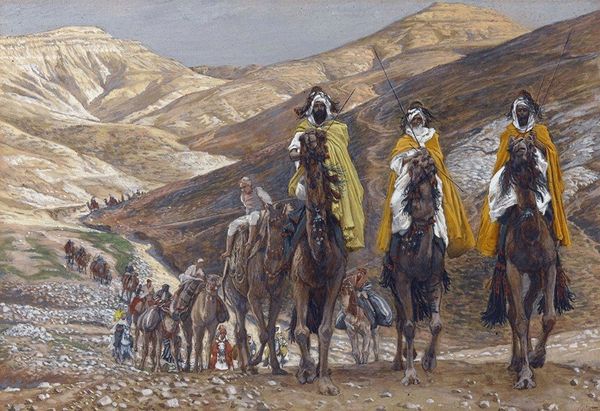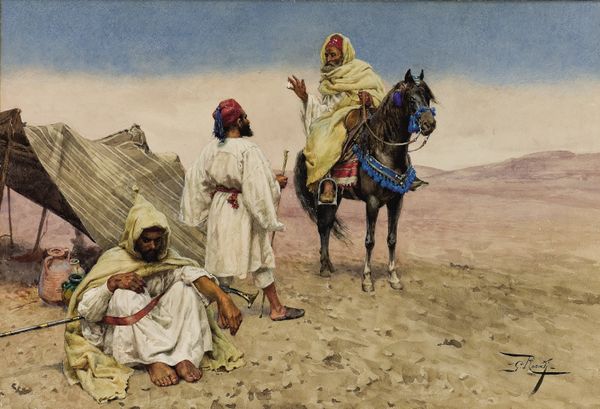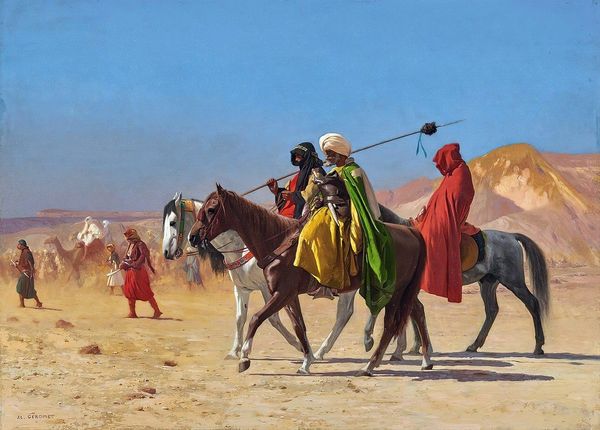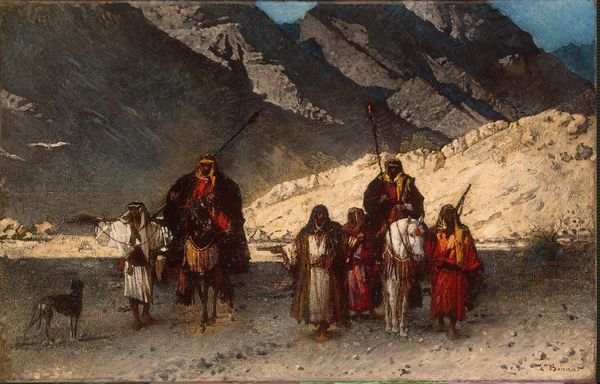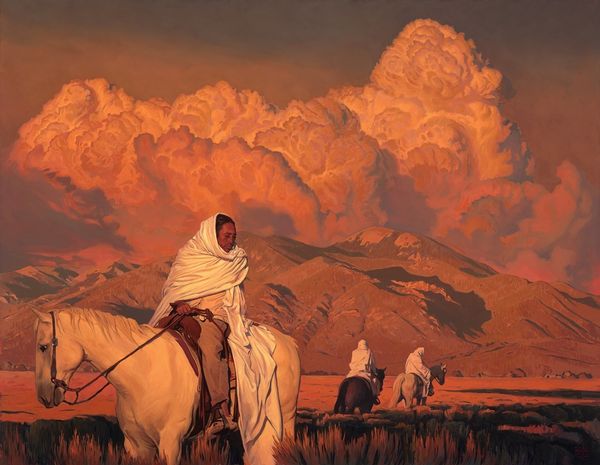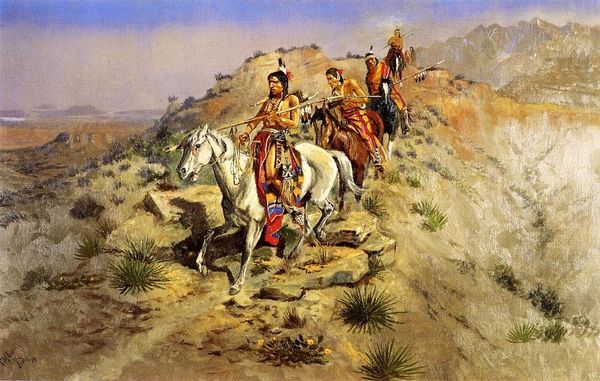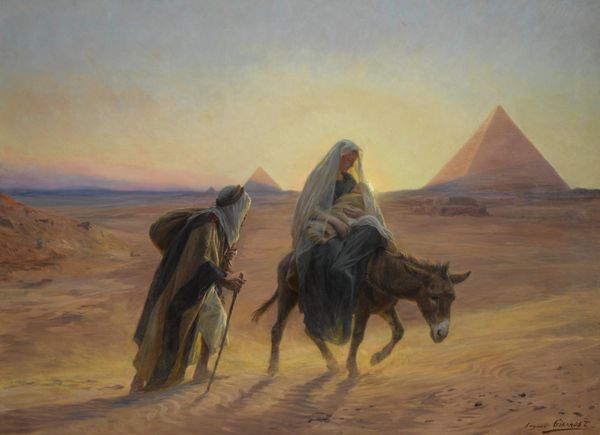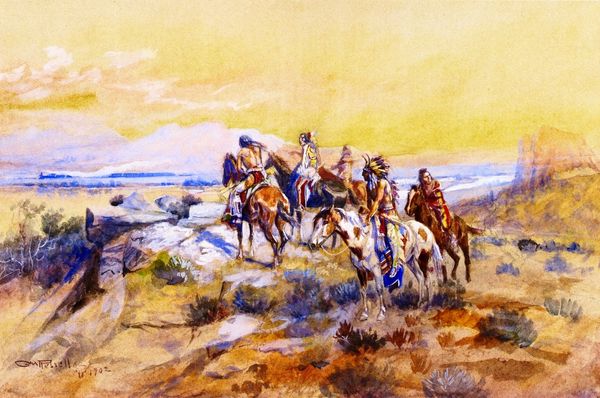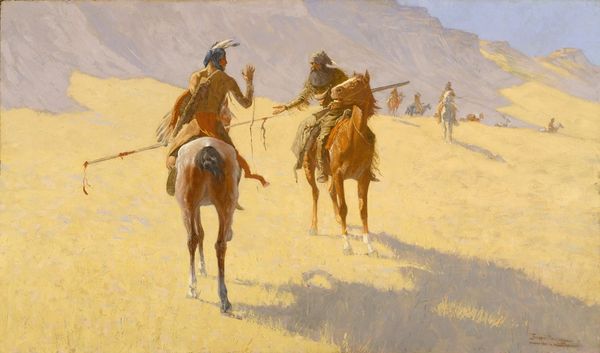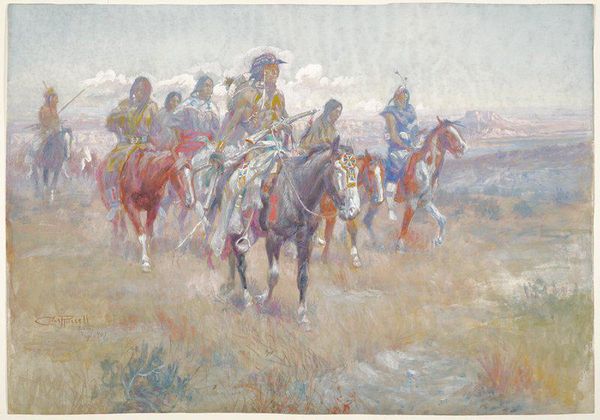
painting, oil-paint, oil-on-canvas
#
narrative-art
#
painting
#
oil-paint
#
landscape
#
oil painting
#
england
#
orientalism
#
history-painting
#
academic-art
#
oil-on-canvas
Dimensions: 27 7/8 x 40 in. (70.8 x 101.6 cm) (canvas)37 1/8 x 48 1/2 x 4 1/2 in. (94.3 x 123.19 x 11.43 cm) (outer frame)
Copyright: No Copyright - United States
Curator: This is James Tissot's "Journey of the Magi," an oil-on-canvas painting created around 1894, now residing here at the Minneapolis Institute of Art. Tissot, an artist deeply rooted in academic and orientalist styles, depicts a scene laden with historical and religious significance. Editor: Wow, just look at this processional scene! Talk about biblical road trip vibes. The landscape itself feels almost… austere, and that yellowish color palette lends this air of ancient solemnity. What a striking image. Curator: Indeed. What strikes me is how Tissot places this scene within an intersectional lens. The "orientalist" gaze allows the artist to present both Western and Middle Eastern identities within one frame. Tissot spent a considerable amount of time in the Middle East studying the culture and customs in order to create a suite of biblical scenes of which "Journey of the Magi" is an important part. Editor: Ah, you see history; I see… the beginning of every awkward family holiday trip, complete with the obligatory scenery shots. Seriously, though, the contrast between the detailed figures and the slightly blurred background makes it feel very intimate. Like we are literally within the artist's vision. Almost as if it were from the saddle itself. I also feel that by seeing them traveling like this helps remind us of how truly distant this journey really was for these wise men. Curator: It also emphasizes the long historical power dynamics, not to mention the relationship between Europe and the Middle East that developed into colonialism. I consider this image to be a representation of a patriarchal society in an exotic, yet historically symbolic locale. Editor: I am intrigued by this. All art stems from society, yet at its purest expression, it seeks a truth to which all individuals from all locations can respond. So it seems almost antithetical that Tissot may have inadvertently used "orientalist" symbolism. To me, it just looks really uncomfortable being on a camel all day! I guess, different strokes, eh? Curator: Perhaps we're both drawn to different layers of meaning, all of which exist simultaneously within this work. Editor: Exactly. And that’s what makes it, and the actual journey, so darn interesting, don’t you think? A reminder that every journey changes both the traveler and the path.

